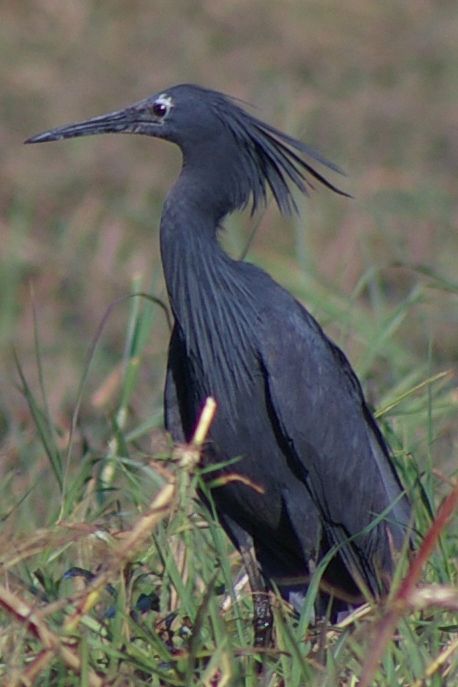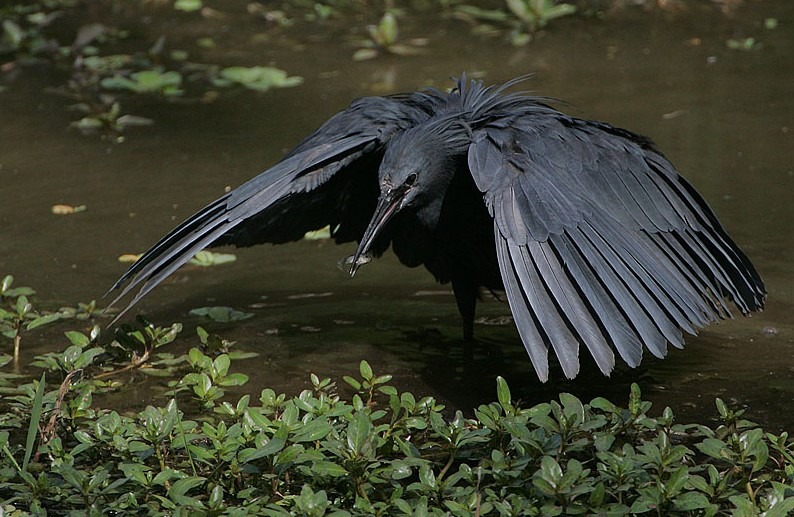Sleek, elegant, and admirable—these are probably some words you would say when you come across a flying Black Egret. This bird is primarily dark in color, and it has habits you will not not find in other bird species that makes it quite interesting to learn about.
Read on to learn more interesting facts about the Black Egret.
What is Black Egret?
Also known as an African heron, the Black Egret may be one of the most beautiful birds you can find here on Earth. Its scientific name is Egretta Ardesiaca and is widely known for its habit of forming its wings to a canopy or umbrella when it goes fishing.
Its dark features make the Black Egret the darkest of all the egret species. Its head is made of a shaggy crest of black, lanceolate feathers, that stretched to the hind, crown of its head, and its nape. In contrast to its dark color, its eyes are bright yellow in color.
Most egret species are larger than the black egret, yet it’s very chunky in size. Its bills, legs, wings, and most parts of its body are black, bluish, or slate-grey, except for its feet, which are yellow or bright orange in color. Sometimes, the Black Egret’s toes turn into red during the start of the breeding season.
Another way to distinguish adult Black Egrets from juveniles is through their feathers. Adult Black Egrets possess prominent and longer feathers, while juveniles have shorter ones.
Most of the time, the Black Egrets live in silence. However, from time to time, it utters deep clucking.
Where can they be spotted?
Today the Black Egret’s populations in Africa are abundant. It can be found in Senegal, Sudan, South Africa, south of Sahara, Botswana, Cape Verde Islands, Israel, and even in European countries such as Greece and Italy.
The Black Egret commonly wanders the lakes, rivers, marshes, and other bodies of freshwater. Occasionally, they can be spotted on bodies of saltwater. The Black Egret prefers lounging and staying in shallow open waters, like the edge of ponds and freshwater lakes. Some sightings of its kind were also found to be feeding in marshes, rice fields, river edges, flooded grasslands, alkaline lakes, and tidal flats.
The nests of Black Egrets are described as a “construction of twigs” that can be seen in trees, bushes, and reed beds. The Black Egret nests when the rainy seasons starts, alone or with other mixed-species colonies. Female Black Egret lays 2-4 pale blue or greyish-blue eggs. When the chicks reach one week of age, they come in a dark grey color with a white downy crest. Its throat, underparts, feet, and legs are yellow in color. After a week, its color will appear darker, as black feathers will start to thrive on their meek bodies.
BOTSWANA BIRDS | SOUTH AFRICA BIRDS
NAMIBIA BIRDS | ZAMBIA BIRDS | ZIMBABWE BIRDS

Fun facts about the Black Egret
There are so many things to love about the Black Egret, but there is something that makes it stand out from the other bird species. This bird is widely known and admired for its wonderful and smart fishing method.
When fishing, the Black Egret walks slowly or quickly along the shallow water, and then it spreads out its long, black wings to form an umbrella over its head. During this moment, its feet scrapes the mud and underwater to provoke the fish. Also, this formation allows the Black Egret to block the sun rays reflecting on the water, thus allowing it to see the fish clearly underwater. After a while, it props up its head, moves its wings away from the water, with a prey caught in between its long beak.
Black Egrets can pretty much live on their own or with a flock, as sightings of the bird suggest that a Black Egret can be seen in flocks made up of an average of 50 birds. The Black Egret feeds alone or with a group, as it can tolerate other species of egrets and heron. Sometimes, it chases off birds of its own species if it prefers to fish alone.
In addition, the Black Egret mainly lives a sedentary lifestyle, so its movements are limited. It fluffs its plumage from time to time, thus making a room for new feathers so new ones can grow slowly.

